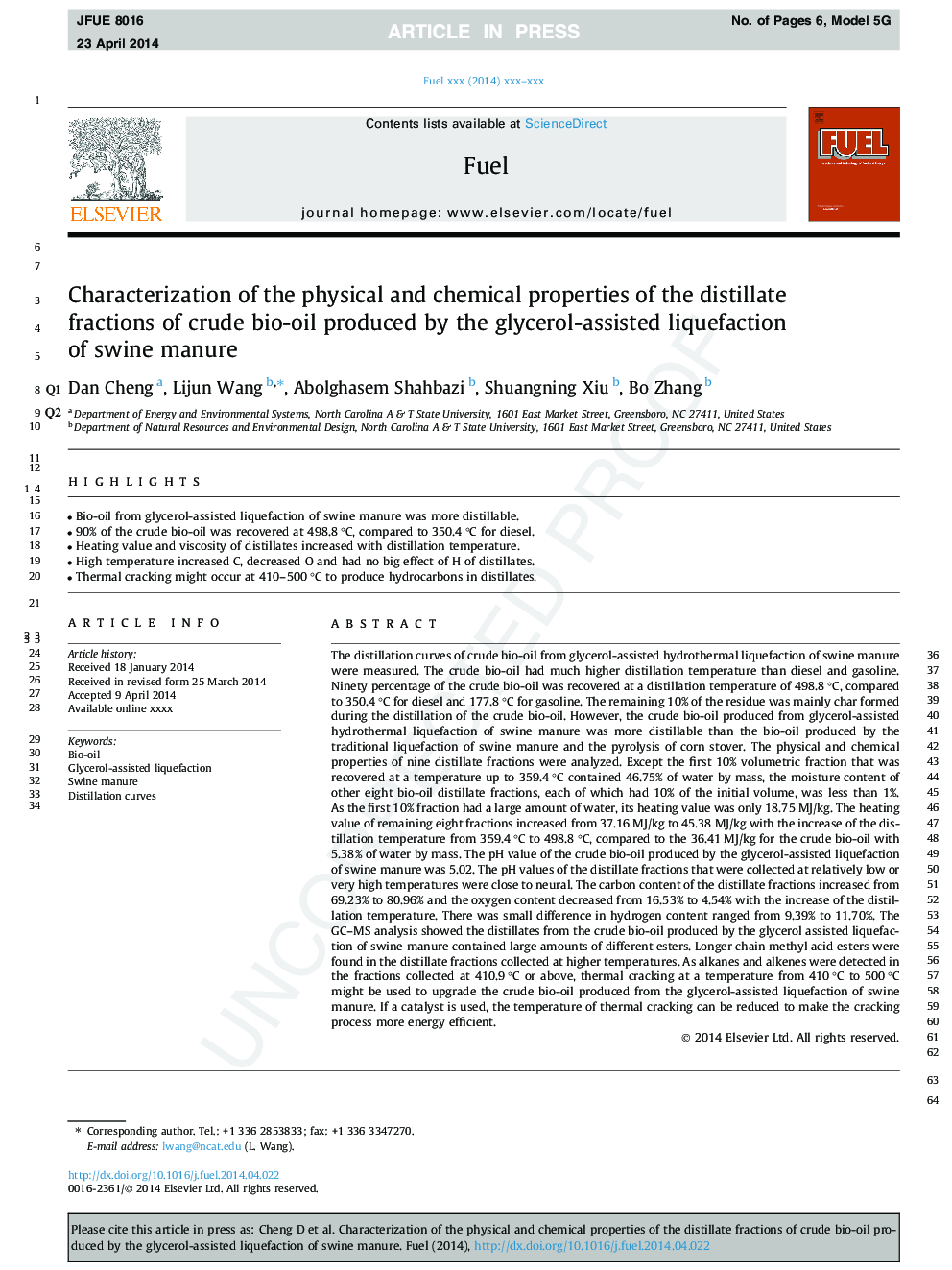| Article ID | Journal | Published Year | Pages | File Type |
|---|---|---|---|---|
| 6637462 | Fuel | 2014 | 6 Pages |
Abstract
The distillation curves of crude bio-oil from glycerol-assisted hydrothermal liquefaction of swine manure were measured. The crude bio-oil had much higher distillation temperature than diesel and gasoline. Ninety percentage of the crude bio-oil was recovered at a distillation temperature of 498.8 °C, compared to 350.4 °C for diesel and 177.8 °C for gasoline. The remaining 10% of the residue was mainly char formed during the distillation of the crude bio-oil. However, the crude bio-oil produced from glycerol-assisted hydrothermal liquefaction of swine manure was more distillable than the bio-oil produced by the traditional liquefaction of swine manure and the pyrolysis of corn stover. The physical and chemical properties of nine distillate fractions were analyzed. Except the first 10% volumetric fraction that was recovered at a temperature up to 359.4 °C contained 46.75% of water by mass, the moisture content of other eight bio-oil distillate fractions, each of which had 10% of the initial volume, was less than 1%. As the first 10% fraction had a large amount of water, its heating value was only 18.75 MJ/kg. The heating value of remaining eight fractions increased from 37.16 MJ/kg to 45.38 MJ/kg with the increase of the distillation temperature from 359.4 °C to 498.8 °C, compared to the 36.41 MJ/kg for the crude bio-oil with 5.38% of water by mass. The pH value of the crude bio-oil produced by the glycerol-assisted liquefaction of swine manure was 5.02. The pH values of the distillate fractions that were collected at relatively low or very high temperatures were close to neutral. The carbon content of the distillate fractions increased from 69.23% to 80.96% and the oxygen content decreased from 16.53% to 4.54% with the increase of the distillation temperature. There was small difference in hydrogen content ranged from 9.39% to 11.70%. The GC-MS analysis showed the distillates from the crude bio-oil produced by the glycerol assisted liquefaction of swine manure contained large amounts of different esters. Longer chain methyl acid esters were found in the distillate fractions collected at higher temperatures. As alkanes and alkenes were detected in the fractions collected at 410.9 °C or above, thermal cracking at a temperature from 410 °C to 500 °C might be used to upgrade the crude bio-oil produced from the glycerol-assisted liquefaction of swine manure. If a catalyst is used, the temperature of thermal cracking can be reduced to make the cracking process more energy efficient.
Keywords
Related Topics
Physical Sciences and Engineering
Chemical Engineering
Chemical Engineering (General)
Authors
Dan Cheng, Lijun Wang, Abolghasem Shahbazi, Shuangning Xiu, Bo Zhang,
